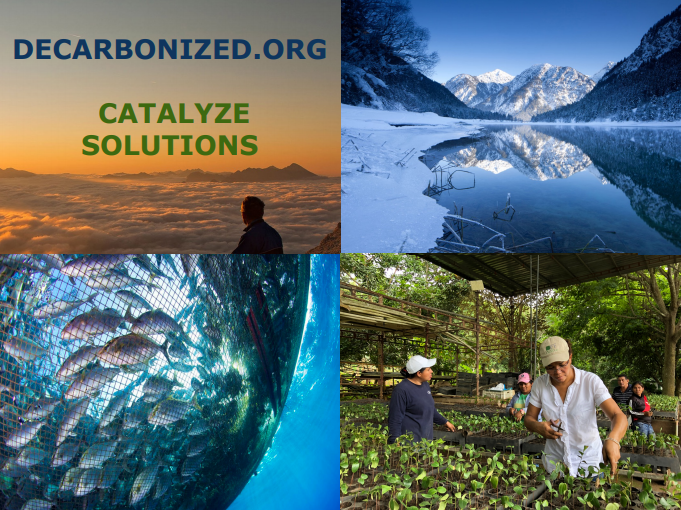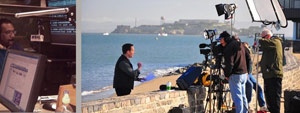It is our goal to remain socially and environmentally responsible while producing programming and completing projects and travel programs that will make an impact on local and global scales.
By becoming a carbon neutral organization, Partnerships For Change can regulate the amount of resources that we use. We can also be accountable for what we do with these resources to help reduce the co2 emissions that are put into our precious environment.
With this effort, we are making a positve shift to ensure a safer
place for future generations.
We will secure carbon neutral credits when applicable and especially for travel.
Global Warming Myths and Facts
MYTH
The science of global warming is too uncertain to act on.
FACT
There is no debate among scientists about the basic facts of global warming.
The most respected scientific organizations have stated unequivocally that global warming is happening, and people are causing it by burning fossil fuels and cutting down forests. The U.S. National Academy of Sciences, which in 2005 the White House called “the gold standard of objective scientific assessment,” issued a joint statement with 10 other National Academies of Science saying “the scientific understanding of climate change is now sufficiently clear to justify
nations taking prompt action. It is vital that all nations identify
cost-effective steps that they can take now, to contribute to
substantial and long-term reduction in net global greenhouse gas emissions.” (Joint Statement of Science Academies: Global Response to Climate Change [PDF], 2005)
The only debate in the science community about global warming is about how much and how fast warming will continue as a result of heat-trapping emissions. In the case of global warming, scientists have given a clear warning, and we have more than enough facts to act on.
MYTH
Global warming is just part of one of the earth’s natural cycles.
FACT
The global warming we are experiencing is not natural.
People are causing it by burning fossil fuels and cutting down
forests. Scientists have shown that these activities are pumping far more carbon dioxide (C02) into the atmosphere than was ever released in hundreds of thousands of years. This buildup of CO2is the biggest cause of global warming. (IPCC 2001) Since 1895, scientists have known that CO2and other greenhouse gases trap heat and warm the earth. As the warming has intensified over the past three decades, scientific
scrutiny has increased along with it. Scientists have considered and ruled out other natural explanations such as sunlight, volcanic eruptions and cosmic rays. (IPCC 2001)
Though natural amounts of CO2vary from 180 to 300 parts per million (ppm), today’s CO2levels are around 380 ppm. That’s 25% more than the highest natural levels, looking back 650,000 years. Increased CO2 levels have corresponded with higher average temperatures throughout that long record. (Boden, Carbon Dioxide Information Analysis Center)
MYTH
As the ozone hole shrinks, global warming will no longer be a problem.
FACT
Global warming and the ozone hole are different problems.
The ozone hole is a thinning of the stratosphere’s ozone layer, which is roughly 9 to 31 miles above the earth’s surface. The depletion of the ozone is due to man-made chemicals like chlorofluorocarbons (CFCs). A thinner ozone layer lets more harmful ultraviolet (UV) radiation to reach the earth’s surface.
Global warming, on the other hand, is the increase in the earth’s
average temperature due to the buildup of CO2 and other greenhouse gases in the atmosphere from human activities.
MYTH
We can adapt to climate change—civilization has survived droughts and ice ages before.
FACT
Individual civilizations have collapsed from dramatic climatic shifts.
Although humans as a whole have survived the vagaries of drought, ice ages and more, not every society has. What’s more, unless we limit the amount of heat-trapping gases we are putting into the atmosphere, we will face a warming trend unseen since human civilization began 10,000
years ago. (IPCC 2001)
The consequences of continued warming at current rates are likely to be dire. Many densely populated areas, such as low-lying coastal regions, are highly vulnerable to climate shifts. A
middle-of-the-range projection is that the homes of 13 to 88 million
people around the world would be flooded by the sea each year in the 2080s. Poorer countries and small island nations will have the hardest time adapting. (McLean et al. 2001) In what appears to be the first forced move resulting from climate change, 100 residents of Tegua island in the Pacific Ocean were evacuated by the government because rising sea levels were flooding their island. Some 2,000 other islanders plan a similar move to escape rising waters.
Scarcity of water and food could lead to major conflicts with broad ripple effects throughout the globe. Even if people find a way to adapt, the wildlife and plants on which we depend may be unable to adapt to rapid climate change. While the world itself will not end, the world as we know it may disappear.
What You Can Do
Small changes to your daily routine can add up to big differences in helping to stop global warming.
What You Can Do
Burning fossil fuels to power our homes and run our cars creates global warming pollution. Big and small changes can add up and make a real difference in the fight against global warming.
Print out a booklet of tips [PDF] or handouts to share!
At Home: Use Less Energy
Home energy accounts for 21 percent of America’s global warming pollution. If we make smart choices, we can cut more pollution than the entire emissions of over 100 countries!
Change a bulb: Better energy-saving lights
Greener power: Re-thinking home energy
Full list of tips: How to cut pollution at home
On the Road: Be Efficient
When it comes to global warming, how and what we drive are two of our most powerful choices. Transportation is the biggest source of U.S. carbon dioxide emissions, more than factories or homes.
Save fuel: Use less gas with your current car
Purchasing power: Changes in the industry
Neutralize the Rest
Even if you have already reduced your driving and electricity use, there’s more you can do. Buying offsets, or credits, neutralizes what we can’t cut.








